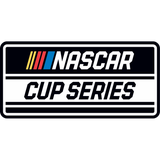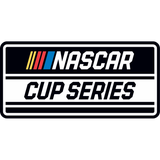Michael McDowell confident in Next Gen car, having best year


By Bob Pockrass
FOX Sports NASCAR Writer
Michael McDowell was always a threat on road courses no matter the car he drove in the NASCAR Cup Series.
He won an Xfinity Series race driving for Richard Childress Racing in 2016 at Road America, so he knows he can get it done.
But he has a different feeling this year as the NASCAR Cup Series heads to Road America this weekend. And that’s because he is a threat to finish in the top-10 on ovals in addition to the road courses.
He finished third in the Cup race earlier this month at Sonoma, which followed top-10s at Darlington (seventh) and Charlotte (eighth) in May.
“Sonoma gave us a lot of confidence,” McDowell said. “We were a couple changes away from being able to win that race at Sonoma, and so if we can take that and build on that and unload well at Road America, we’ll have a shot at it.”
McDowell has four top-10s in the past nine Cup races and sits 21st in the Cup standings. His average finish this season is 17.1, which puts him on pace for his first year in which his average finish is above 20th.
The Front Row Racing driver’s points standing is more a reflection of not earning stage points — he has earned points in just three of the 35 stages this year — than it is of not finishing in the top-20.
Michael McDowell on success in 2022
Prior to the Nashville race, Michael McDowell had five top-10s in the previous eight races. He discusses how he’s earning those finishes while not finishing top-10 in most of the early stages.
It is just another sign of steady progress for this team. Heading into the season, the team had hoped that NASCAR’s new Next Gen car — and the requirement that teams purchase most of the parts and pieces from one single vendor instead of teams creating or obtaining their own parts and pieces — would create more parity.
“Last year, we started that trend and that momentum getting more top-10s, running well,” said McDowell, who won the 2021 Daytona 500. “And then this year, with this Next Gen car and just the chemistry Blake and I have, we’ve been hitting on it.
“And I feel like we’re in a good spot. It’s been a lot of fun. It’s exciting to work really hard for a long time and finally get to be competitive week-in and week-out.”
But McDowell’s team had a little bit of adversity when crew chief Drew Blickensderfer left for Stewart-Haas Racing. Blake Harris, car chief for Joe Gibbs Racing’s Martin Truex Jr., joined the organization in January.
There have been races in which McDowell could have earned stage points, but the team pitted to make sure they had track position for the final stage. Some weeks, they haven’t qualified great, and they hang out between 10th and 20th for much of the early stages, and it takes a while to get inside the top-10.
“Michael’s really good at conserving his stuff, not beating the car up, not knocking the wall down by trying to run the wall early on,” Harris said. “So I think some of our finishes when we haven’t had strong days have been a little bit due to attrition as well.
“That kind of all plays into why you don’t see us stage-pointing as much as we do when we can finish well.”
So is it just the Next Gen car that has increased the performance of the team?
“It can’t just be that,” McDowell said. “We were building towards this, running [in the] teens last year and maybe not getting as many top-10s and top-5s, but we were close to where we’re at, just executing a bit better this year. There’s a lot of factors.
“We have really solid people with good Cup experience, and then the new car is just bringing the playing field closer together.”
That performance (and now confidence) from Sonoma is the result from the new car. McDowell said no matter how good a driver anyone is, there is a limit to how much a driver can do when teams are all building the cars slightly differently as was the case for many of the previous years.
McDowell believes Next Gen drives better in traffic
Michael McDowell is averaging a top-20 finish for the first time in his career. He explains why that’s important to him and why he believes these cars are better in traffic than in the past.
“I always thought Sonoma would be the place where I would shine and stand out and never have run good there,” McDowell said. “So with all the same brakes, and all the same parts in our cars, holding about the same amount of lead, I did what I felt like I could do this whole time.
“In years past going there with a car that holds 100 pounds [of adjustable weight] compared to the Hendrick cars that are holding 350 pounds and [I’m] probably 300 pounds down on downforce, and not as good of brakes — it doesn’t matter how good of a road-course racer you are, you’re not going to be able to keep up.”
Now McDowell and his team can keep up, although they know they will still be underdogs.
“It’s important to keep sight of where we’re at,” Harris said. “I don’t want to pitch [that we’re] underfunded by any means, but we don’t have the funding or the factory-backed support that your top-24 teams do.
“I still kind of stand by at any point when we’re running inside the top-20, we’re beating a handful of guys that we probably shouldn’t.”
Part of that is McDowell and his 15 years of driving in Cup. Not all of those years were all that glamorous as McDowell had seasons when his primary goal was to qualify for a race and then park it early in the event to collect the purse money.
“Michael does a super good job of knowing and being really prepared of where the track is going to go, what adjustments, and I would say he’s a super analytical guy,” said rookie Todd Gilliland, McDowell’s teammate at Front Row. “I’m sure he knows his car in and out and could probably set it up by himself.”
What McDowell knows is he is having a season to remember following a year when he won the Daytona 500.
“I feel like the last five years we’ve been making good gains, and this is an extension of that,” McDowell said. “But [this is] definitely the best season I’ve had.”
What to watch for
At 4.048 miles in length, Road America is the longest road course for NASCAR. And that means a “short” race in terms of laps. The stages are 15 laps, 15 laps and then 32 laps on the Cup side.
While there are plenty of corners to get things done, it does mean that strategies come into play as far as when to pit. Fuel mileage? Better not run out of fuel because it could be hard to coast all the way to pit road.
It also means a long time under cautions for drivers and teams to determine strategy (and if you’re watching from home, time to go get something to eat or drink). That can be a good or bad thing, as teams could over-think their strategy. The vastness of the facility also can lead to radio communication issues.
And then there’s the challenge for NASCAR as the sanctioning body as it uses cameras stationed around the track primarily to determine cautions — and its goal is that cautions are only one or two laps.
Thinking out loud
There will be a lot of chatter on whether Road America should remain on the Cup schedule as NASCAR looks to the possibility of a street course in Chicago.
At a few hours apart, it would seem natural that if NASCAR wanted to add the Chicago street course, then Road America might be the one to get cut from the schedule.
But that’s a myopic view. The courses would be so different with Road America having plenty of passing opportunities and long straightaways while a street course likely will be a much more narrow circuit.
And Road America on July 4 weekend seems to be a much better fit than racing in Chicago on July 4 weekend, when the disruption to those who stay in the city for the holiday and are not interested in the event might leave them with a sour taste.
The Wisconsin market should be viewed as an important one as those are NASCAR’s diehard fans. At 1,600 campsites, no one should think Road America shatters any attendance records (you would need to average 30 people per campsite to even have 48,000 people there). But the clusters of grandstands and then people lining the course give it a great atmosphere, and the July 4 weekend is a perfect one to race at a track with limited corporate opportunities as most corporate executives likely don’t want to travel.
If NASCAR wants to take away a road course, why not put the Indianapolis Motor Speedway race back on the oval, especially since the Next Gen car seems to race better at intermediate tracks? NASCAR can move a race from a venue with two events (Kansas? Richmond?) or possibly take a year off from Auto Club Speedway in California to begin the already delayed project of converting it to a half-mile (especially when the Clash will be back at the L.A. Coliseum next year).
If Road America comes off the schedule just because of the Chicago street course, that would be disappointing. If it comes off because at 4.048 miles in length that the long caution flags make it a frustrating show and/or NASCAR just wants a race with more laps, that would at least be more understandable.
Social spotlight
They said it
“Every win is important and special to me because they’re really hard to get. I don’t take any of them for granted, so they’re all big in my opinion. They’re too hard to win to not appreciate them in a pretty high regard.” — Chase Elliott after his win at Nashville
Bob Pockrass has spent decades covering motorsports, including the past 30 Daytona 500s. He joined FOX Sports in 2019 following stints at ESPN, Sporting News, NASCAR Scene magazine and The (Daytona Beach) News-Journal. Follow him on Twitter and Instagram @bobpockrass. Looking for more NASCAR content? Sign up for the FOX Sports NASCAR Newsletter with Bob Pockrass!
Get more from NASCAR Cup Series Follow your favorites to get information about games, news and more.











